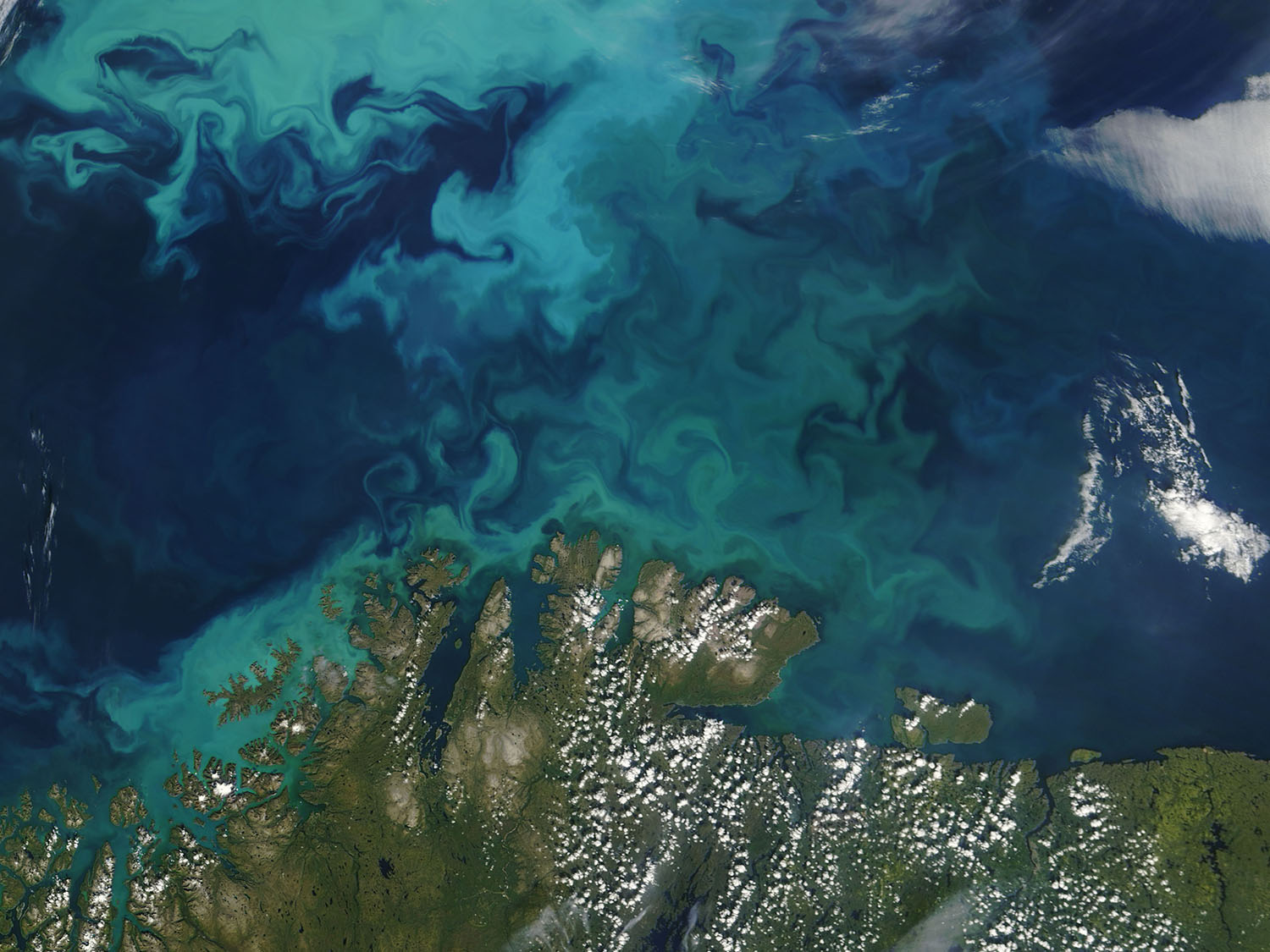Major Programs

Interdisciplinary studies. Individual attention.
Course 12 students have opportunities unmatched by any other program—all closely guided by renowned MIT faculty. Whether collecting samples in the field or building models and experiments in the lab, you’ll be investigating the interconnected systems that shape the Earth and distant planets—with profound implications for the sustainable use of the world’s resources, the health of the planet, and the exploration of space.
And, in the process, you’ll develop quantitative and analytical skills transferable to any discipline as you pursue your degree and build a career.
Trying to decide among interests in biology, physics, chemistry, and math? Perhaps you’re interested in data science or engineering as well? Course 12’s flexible academic program is built around four areas of concentrated study, allowing students to pursue their individual interests. And our small class sizes encourage and enhance student-professor interactions.
Major in Course 12.
The requirements for the Course 12 bachelor of science are designed to give you the chance to explore the research area that excites you. After building a foundation with the subjects in the core, you will select subjects from your area of concentration along with lab and field subjects that support your interests. Your advisor will help you build a coherent program.
Areas of Concentration
Whichever major concentration you choose, our challenging fields of study integrate biology, chemistry, mathematics, and physics with data science and real-world applications.
Explore each section below to download specific degree roadmaps and requirements.

Earth has evolved to provide everything that allows modern human life to flourish, from the vital water we require to drink and grow our food; to the minerals like iron, aluminum, copper, and silicon that build everything from giant skyscrapers to tiny computer chips; to the energy that powers both industry and the everyday. But our dynamic planet also unleashes natural disasters which reshape the landscape and threaten communities.
The Earth Science concentration explores our understanding of Earth’s present, its past, and its potential future.
Download concentration-specific materials:
Or explore the degree chart at catalog.mit.edu

With cyclones growing in frequency and ferocity, communities increasingly threatened by landslides and extreme flood events, and melting permafrost endangering habitats and belching trapped carbon dioxide and methane into the atmosphere, the need for fundamental climate research has never been greater.
The Climate, Atmospheres + Oceans concentration examines the interconnected natural systems which combine to produce and influence climate, from deep time to present day, on Earth and on other planets.
Download concentration-specific materials:
Or explore the degree chart at catalog.mit.edu

With a foundation rooted in theory and hands-on observation, the Planetary Science + Astronomy concentration explores our dynamic solar system—providing a window into Earth’s own workings, past and future. Magnetic properties of meteorites have helped establish a timeline for how quickly our solar system emerged from its protoplanetary nebula, and offer insights into the early composition of planetary bodies as they formed. The atmospheric extremes of other planets can tell us about our own climate and its potential changes, whether it be the cooling effects of dust, the heat-trapping properties of carbon dioxide, or even interactions with the solar wind. And as we continue to discover the existence of water and organic molecules elsewhere in the solar system, we are given more clues to the origins of life on Earth—and the tantalizing prospect of detecting life beyond our own planet.
Download concentration-specific materials:
Or explore the degree chart at catalog.mit.edu

Every major event in the history of life has been accompanied by environmental change. Photosynthesizing cyanobacteria led to the Great Oxygenation Event and the formation of animal life. Greenhouse gases and toxic metals from massive supervolcanoes triggered the Great Dying with a rapid global warming of 10ºC, but also paved the way for the rise of dinosaurs and mammals. Sea level changes as the last ice sheets began to melt altered ocean currents, speeding glacial retreat and allowing humans to spread into North America.
The Environmental Science concentration studies past patterns of the Earth’s biosphere and expands our understanding of the interconnected systems of the natural world that we experience today—providing valuable insight to help guide our future.
Download concentration-specific materials:
Or explore the degree chart at catalog.mit.edu
Course 1-12
Climate System Science + Engineering
Jointly offered by EAPS and the Department of Civil and Environmental Engineering (CEE), the Course 1-12 bachelor of science combines scientific understanding of the Earth’s systems with engineering skills—as well as an understanding of human and institutional behavior—to prepare students for careers in the global response to climate change.
Learn more about the program and degree requirements at climate-major.mit.edu
Ready to declare?
If you are ready to declare for Course 12 or Course 1-12, follow the instructions provided by the Registrar’s Office.
“The interdisciplinary nature of Course 12 means you collaborate with geologists, climate scientists, astrobiologists — you name it — and everyone has unique stories to share.”
Skylar Larsen ’23
How do I become an EAPS major?
MIT First-Year students choose a department for their major at the end of the spring term. If you would like to discuss majoring in EAPS please talk to any of our faculty or or get in touch with the EAPS Education Office.
Contact the EAPS Education Office
Undergraduate FAQs
Yes! Beyond the General Institute Requirements (GIRs), students must have satisfactorily completed 180-198 units, comprised of subjects in the major and unrestricted electives.
EAPS offers rigorous options in four areas of concentration which satisfy these requirements. Check out our program roadmaps for year-by-year examples of how you might construct your Course 12 degree:
- Earth Science Roadmap (PDF)
- Climate, Atmospheres + Oceans Roadmap (PDF)
- Planetary Science + Astronomy Roadmap (PDF)
- Environmental Science Roadmap (PDF)
To learn more about how you might develop a program of study, get in touch with the EAPS Education office—or visit us in 54-912.
The EAPS Academic Program Administrator matches majors to their academic advisor. After the department is notified about a new major, the Academic Program Administrator will typically send an e-mail to the student asking if they have a specific area of interest in EAPS. Matches will first be made based off of interests the student submits. In most cases, EAPS majors retain their advisors throughout their studies in EAPS.
Absolutely!
A double major in Course 12 can be a high-value addition to many other programs of study. Our interdisciplinary research teaches students to quantify and analyze complex natural processes and takes on some of the most profound questions of our time. In EAPS, you’ll gain critical problem-solving skills, jump-starting your pursuit of an advanced degree in any field, or a career as a leader in industry or government.
Common complementary degree tracks include: electrical engineering and computer science, civil and environmental engineering, aeronautics and astronautics, chemistry, biology, physics, and mathematics.
Course 12 students fulfill the Communication Intensive in the Major (CI-M) requirement in two ways.
- Take one required Lab + Field Subject, which is a requirement of the major:
- 12.115: Field Geology, and 12.116: Analysis of Geologic Data
- 12.307: Weather and Climate Laboratory
- 12.335: Experimental Atmospheric Chemistry
- 12.410J: Observational Techniques of Optical Astronomy
- Complete your thesis while registered for at least 6 Units of 12.THU
Ready to collaborate with EAPS faculty and scientists on exciting, real-world research?



